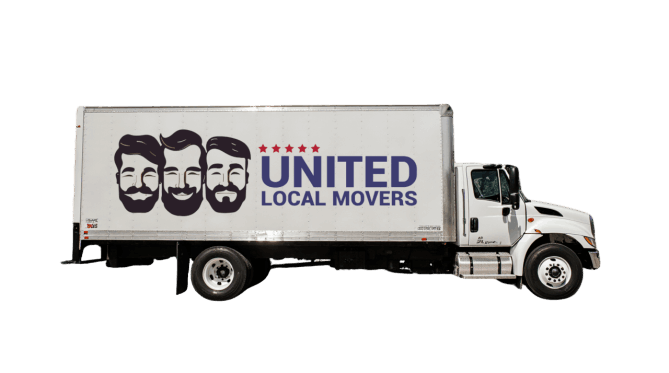Even the most carefully planned move can include unexpected costs. You get your moving estimate, think everything’s covered, and then — surprise — your final bill lists “long-carry,” “elevator,” or “shuttle” fees. These access-related charges are among the most misunderstood parts of moving quotes, yet they’re common for both local and long-distance moves. Understanding when and why they apply helps you budget accurately and avoid surprises.
What Are Access Fees in Moving?
Access fees are additional charges movers apply when they face obstacles that make loading or unloading more difficult or time-consuming. These aren’t hidden tricks — they’re compensation for extra labor, equipment, or time caused by conditions at your origin or destination. The three most common are:
- 🚶♂️ Long-carry fees — when movers have to walk more than a set distance from the truck to your door.
- 🏢 Elevator fees — when movers use elevators instead of direct ground access.
- 🚐 Shuttle fees — when the moving truck can’t reach your home and a smaller vehicle is needed to transfer belongings.
Each of these fees is legitimate — but with the right preparation, you can minimize or avoid them.
Long-Carry Fees: When Distance Costs Extra
A long-carry fee applies when movers must carry items a significant distance between the truck and your home. Most companies include the first 75 feet in the base rate. Anything beyond that is billed per additional foot or per 50-foot increment.
| Distance from Truck to Door | Fee Type | Typical Range |
|---|---|---|
| 0–75 ft | Included in base rate | – |
| 75–150 ft | Long-carry fee applies | $75–$150+ |
| 150+ ft | Additional increments | $1–$2 per extra foot |
Common causes of long carries include large apartment complexes, limited parking, gated communities, and urban streets where trucks can’t park directly in front.
How to Avoid or Reduce Long-Carry Fees
- 🚛 Reserve parking close to your entrance if allowed.
- 🏢 Ask property management for temporary loading access.
- 📏 Measure the distance between the truck spot and your door before moving day.
- 💬 Tell your mover in advance — they can plan accordingly or adjust the quote upfront.
Being proactive can turn a surprise charge into a manageable, expected part of your budget.
Elevator Fees: When Your Floor Adds Extra Work
Moving into or out of a building with elevators can also trigger an elevator fee. While elevators make moves easier, they also slow things down because movers must wait for the car, load in small batches, and protect elevator walls and floors.
Most moving companies charge an elevator fee as a flat rate per location or per hour of elevator use.
| Scenario | Example | Typical Fee |
|---|---|---|
| Freight elevator available | High-rise or condo building | $75–$150 |
| Passenger elevator only | Older buildings or walk-ups with small cars | $100–$200+ |
| No elevator (stairs only) | Per flight fee instead | $50–$100 per floor |
Tips to Reduce Elevator Fees
- 📅 Reserve the freight elevator in advance with your building manager.
- 🕓 Schedule moves during off-peak hours when elevators are less busy.
- 🧭 Notify movers early if your elevator requires access codes or keys.
- 🔧 Ask if protective pads or mats are required — some buildings fine you without them.
Knowing building policies ahead of time saves both time and money.
Shuttle Fees: When the Big Truck Can’t Reach You
A shuttle fee applies when a large moving truck (often 53 feet long) cannot reach your residence safely or legally. In that case, the mover uses a smaller truck or van — called a shuttle — to transfer your belongings between the big truck and your home.
- 🚐 Common causes: Narrow streets, weight restrictions, low bridges, tight turns, or long driveways.
- 🏙️ Most common in: Urban areas, gated communities, and mountainous regions.
Shuttle fees are usually based on the size of the shipment and distance from the main truck to your residence.
| Shuttle Type | Typical Use | Average Cost |
|---|---|---|
| Small van (10–14 ft) | Light loads or small apartments | $200–$400 |
| Medium truck (16–20 ft) | Standard household goods | $400–$700 |
| Large shuttle (24–26 ft) | Big homes or long distances | $700–$1,000+ |
How to Avoid or Prepare for Shuttle Fees
- 📍 Send your mover clear photos or videos of your street and driveway.
- 🧭 Check for bridge or road restrictions on your route.
- 🏡 Coordinate with neighbors or property management to allow temporary access.
- 🚛 Ask your mover if they can use a smaller truck for the full trip.
Professional companies like United Local Movers often survey access points beforehand to anticipate and minimize shuttle costs.
Other Access-Related Fees You Might Encounter
In addition to long-carry, elevator, and shuttle fees, there are a few other potential charges movers may apply:
- 🏗️ Crane or hoisting fees: For lifting oversized items through windows or balconies.
- 🏞️ Stair carry fees: When movers must carry items up or down multiple flights.
- 🏠 Split pickup or delivery fees: If items are picked up or dropped off at multiple locations.
- 🚦 Accessorial surcharges: For complex urban areas or restricted loading zones.
Understanding these helps you ask the right questions before booking.
How Movers Determine When Fees Apply
Reputable movers don’t invent fees after the fact. They apply them based on clearly defined criteria in your contract. Usually, fees apply if:
- The distance between the truck and your door exceeds 75 feet.
- Elevator use adds measurable time to loading/unloading.
- A shuttle is required due to access or parking limitations.
Professional companies include these items in their written estimates if they can anticipate them in advance.
Why These Fees Exist
While access fees can feel frustrating, they exist for practical reasons. Moving crews are typically paid by time and workload. When access is limited, labor time increases — and so do the risks of damage or injury.
- 🏋️♂️ Longer carries mean heavier lifting and more trips.
- 🏢 Elevators reduce efficiency but protect safety.
- 🚐 Shuttles add vehicle, fuel, and labor costs.
Understanding the “why” helps put these charges into perspective — and helps you budget realistically.
Negotiating or Bundling Fees
Some movers offer flexibility on access charges, especially if you communicate early. Tips for negotiation:
- 📞 Ask if flat-rate packages include access fees.
- 🧾 Request a detailed breakdown of costs before signing.
- 💬 See if combining services (packing + moving) reduces overall fees.
- 📅 Schedule during off-peak days when movers may offer discounts.
Transparency benefits both you and the mover — and helps avoid misunderstandings on moving day.
What to Do If You Disagree With a Fee
If you believe a fee was charged incorrectly:
- 🧾 Review your Bill of Lading (BOL) for details.
- 📸 Provide photo evidence (for example, showing a short carry distance).
- 💬 Contact the company promptly to request clarification or adjustment.
Reputable movers like United Local Movers handle disputes professionally and aim for transparent billing practices.
How to Prevent Surprises on Moving Day
Access fees often catch people off guard because they weren’t discussed early. To stay ahead:
- 📋 Schedule a virtual or in-home estimate — movers can see access conditions upfront.
- 📷 Send photos or videos of both properties (entrances, elevators, parking).
- 🧭 Ask specifically about long-carry, elevator, and shuttle fees before booking.
- 🗂️ Get everything in writing on your estimate.
Good communication upfront saves stress, time, and money later.
Moving With Clarity and Confidence
Access fees aren’t hidden tricks — they’re just part of the logistics puzzle. Once you understand how and why they apply, you can plan accordingly, communicate with your mover, and prevent surprise costs. Preparation and transparency turn what could be frustrating fees into a smooth, predictable process.
With United Local Movers, your relocation becomes safer, faster, and stress-free — no surprises, no confusion, just clarity and care from start to finish.





